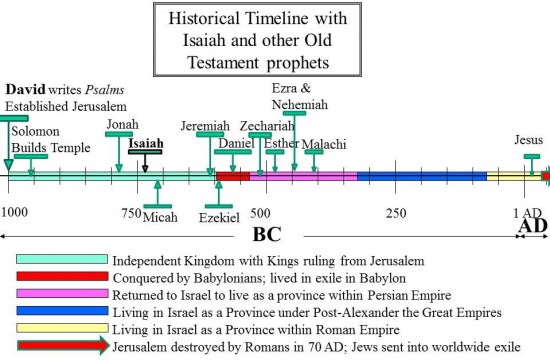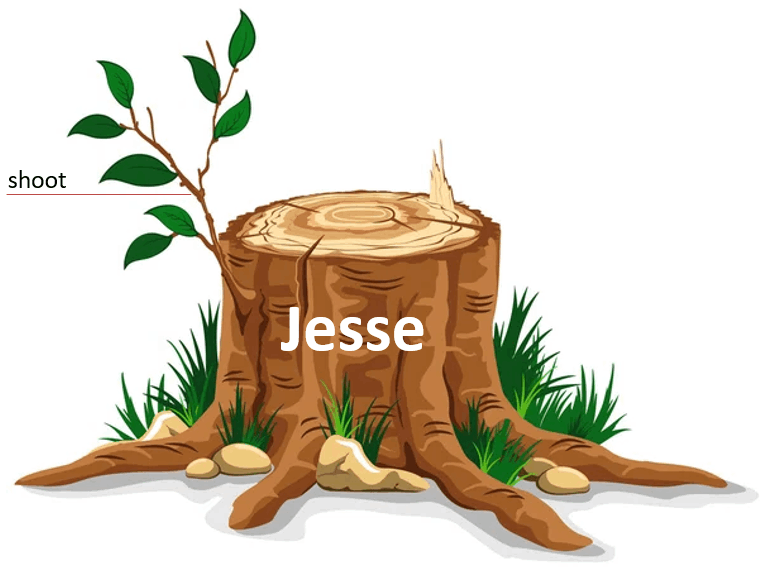Jesus had critics who questioned his authority. He would answer them by pointing to the prophets that came before, claiming that they foresaw his life. Here is one example where Jesus said to his critics:
You study the Scriptures diligently because you think that in them you have eternal life. These are the very Scriptures that testify about me,
John 5:39
In other words, Jesus claimed that he was prophesied in the Old Testament, which preceded him by hundreds of years. The Old Testament prophets claimed that God inspired their writings. Since no human can predict with certainty hundreds of years into the future, Jesus claimed this as evidence to check if he had really come as God’s plan or not. We can use this test to see if God exists and if He speaks. The Old Testament, unchanged and pre-dating Jesus by hundreds of years, is available for us to examine and consider this same question for ourselves.
First some review. The very beginning of the Old Testament hinted at Jesus’ coming. Then Abraham’s sacrifice foretold the spot where Jesus was to be sacrificed while the Passover foretold the day in the year that it would occur. We saw that Psalm 2 inaugurated the title ‘Christ’ to foretell a coming King. But it did not end there. Later prophets advanced additional prophetic themes. Isaiah (750 BCE) began a theme that later prophets developed – that of the coming Branch.
Isaiah and the Branch
The figure below shows Isaiah in a historical timeline with some other Old Testament writers.

The timeline shows that Isaiah wrote his book in the period of David’s Royal dynasty (1000–600 BCE). At that time (ca 750 BCE) the dynasty and the kingdom was corrupt. Isaiah pleaded that the Kings return back to God and the practice and spirit of the Mosaic Law. But Isaiah knew that Israel would not repent. So he also prophesied her destruction and the termination of the royal dynasty.
He used a specific metaphor, or image, for the royal dynasty, picturing it like a great tree. This tree had at its root Jesse, the father of King David. On Jesse the Dynasty began with David, and from his successor, Solomon, the tree continued to grow and develop.

First a Tree … then a Stump … then a Branch
Isaiah wrote that God would soon cut this ‘tree’ dynasty down, reducing it to a stump. Here is how he began the tree image which then he turned into the riddle of a stump and Branch:
“A shoot will come up from the stump of Jesse; from his roots a Branch will bear fruit. The Spirit of the LORD will rest on him–the Spirit of wisdom and understanding, the Spirit of counsel and of power, the Spirit of knowledge.”
Isaiah 11:1-2

The cutting down of this ‘tree’ happened about 150 years after Isaiah, around 600 BCE. Then the Babylonians conquered Jerusalem and dragged its people into exile (the red period in the timeline above). Jesse was the father of King David, and so was the root of David’s Dynasty. The ‘stump of Jesse’ was therefore a metaphor to the coming shattering of David’s dynasty.
The Branch: A coming ‘him’ from David possessing wisdom

But this prophecy also looked further into the future than just the cutting down of the kings. Isaiah predicted that the ‘stump’ would look dead, as stumps do. Nonetheless, one day in the far future a shoot, known as the Branch, would emerge from that stump. Certain trees have this capability to send up shoots from stumps. Isaiah used this natural process to help us picture how the Branch would come. Isaiah refers to this Branch as a ‘him’ so Isaiah is talking about a specific man, coming from the line of David after the dynasty’s fall. This man would have such qualities of wisdom, power, and knowledge it would be as if the very Spirit of God would be resting on him.
Jesus … A ‘him’ from David possessing wisdom
Jesus fits the requirement of coming ‘from the stump of Jesse’ since Jesse and David were his ancestors. What makes Jesus very unusual is the wisdom and understanding he possessed. His shrewdness, poise and insight in dealing with opponents and disciples continue to impress both critics and followers ever since. His power in the gospels through miracles is undeniable. One may choose not to believe them; but one cannot ignore them. Jesus fits the quality of possessing exceptional wisdom and power that Isaiah predicted would one day come from this Branch.
Jeremiah and The Branch
Isaiah laid down a signpost in history with that prophecy. But it did not end there. His signpost is only the first of several signs. Jeremiah, living about 150 years after Isaiah, when David’s dynasty was actually being cut down before his very eyes wrote:
“The days are coming,” declares the LORD, “when I will raise up to David a righteous Branch, a King who will reign wisely and do what is just and right in the land. In his days Judah will be saved and Israel will live in safety. This is the name by which he will be called: The LORD our Righteousness“.
Jeremiah 23:5-6
Jeremiah expands on the Branch theme of David’s dynasty started by Isaiah 150 years earlier. The Branch will be a King who reigns. But this is exactly what Psalm 2 prophecy said of the coming Son of God/Christ/Messiah. Could it be that the Branch and the Son of God are one and the same?
The Branch: The LORD our Righteousness
But what is this Branch to be called? He would be called the ‘LORD’ who will also be ‘our’ (that is – us humans) Righteousness. As we saw with Abraham, the problem for humans is that we are ‘corrupt’, and so we need ‘righteousness’. Here, in describing the Branch, Jeremiah hints that in the future people would get their needed ‘righteousness’ by the LORD – YHWH himself. (YHWH is the name for God in the Old Testament). But how would this be done? Zechariah fills in more details as he develops further about the Coming Branch. He even predicts the name of Jesus – which we look at next.